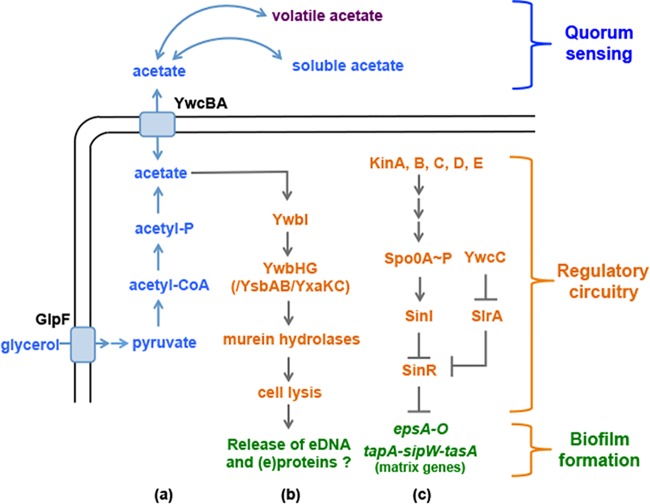FIG 1 .
A working model for acetate-mediated biofilm induction in B. subtilis. This model integrated three different pathways: the biosynthesis and secretion pathway for acetic acid (a), the proposed targets and predicted molecular mechanisms of acetic acid in the regulation of biofilm formation (b), and the genetic circuitry that regulates biofilm formation (c). As shown in panel a, when glycerol is consumed as a carbon source, it is sequentially converted to pyruvate, acetyl-CoA, and acetyl-phosphate and finally to acetate. GlpF is the glycerol uptake facilitator protein. YwcBA is the putative acetate transporter. As shown in panel b, YwbI is the regulatory protein that activates the expression of ywbHG in response to acetate. We propose that YwbHG, YsbAB, and YxaKC collectively regulate the activity of murein hydrolases and that the latter then triggers regulated cell lysis. Extracellular DNA (and/or proteins) released from regulated cell lysis could influence biofilm formation in B. subtilis. As shown in panel c, the matrix operons (epsA-O and tapA-sipW-tasA) are repressed by SinR, whose activity is antagonized by two antirepressors SinI and SlrA.

